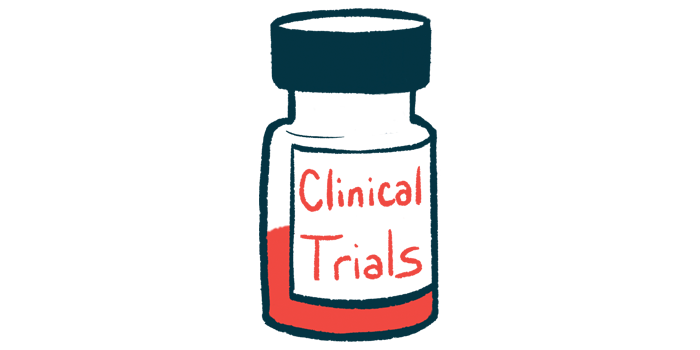‘Favorable risk-benefit profile’ seen for DMD treatment SRP-5051: Trial
Dystrophin protein production upped in patients amenable to exon 51 skipping

SRP-5051 is able to increase the production of dystrophin protein in people with Duchenne muscular dystrophy (DMD) amenable to exon 51 skipping — a trial finding its developers suggest will lead to a positive risk-benefit profile for the next-generation DMD treatment.
The full results of the two-part Phase 2 clinical trial — called MOMENTUM (NCT04004065) and launched in 2019 to test the efficacy of the DMD treatment candidate — have now been announced by developer Sarepta Therapeutics.
These findings suggest that SRP-5051 is substantially more effective at increasing dystrophin production than is Exondys 51 (eteplirsen), an older therapy from Sarepta that’s authorized in the U.S. to treat DMD amenable to exon 51 skipping.
“SRP-5051 dosed every four weeks is showing substantially higher increases in dystrophin and exon skipping compared to [Exondys 51] dosed weekly,” Louise Rodino-Klapac, PhD, Sarepta’s executive vice president, chief scientific officer, and head of research and development, said in a company press release.
“The data suggest a favorable benefit-risk profile for SRP-5051 and we look forward to discussing the results and next steps with [the U.S. Food and Drug Administration],” Rodino-Klapac added.
SRP-5051 worked better than older DMD treatment Exondys 51 in trial
DMD is caused by mutations that disrupt production of dystrophin, a protein that normally helps to cushion muscle cells against damage. Without functional dystrophin, muscle cells accumulate damage and start to break down.
Exon skipping is a therapeutic strategy that basically aims to skip over the mutated part of the gene that provides instructions for dystrophin. That, in turn, allows muscle cells to produce a shortened but functional version of the protein. According to Sarepta, about 13% of DMD patients have mutations that are amenable to exon 51 skipping.
Sarepta is developing SRP-5051, also known as vesleteplirsen, as a next-generation successor to Exondys 51, which is given by weekly infusion. The newer DMD therapy, designed to more effectively get inside cells, would be given only every four weeks, or basically monthly, which is expected to ease the burden of treatment for patients.
Results from the first part of the MOMENTUM study, announced in 2021, suggested that SRP-5051 at a dose of 30 mg/kg once every four weeks could increase dystrophin levels more than weekly Exondys 51 after about three months.
The second part of the study included 40 children and young adults, ages 8 to 21, with DMD amenable to exon 51 skipping. All were treated with SRP-5051 at one of two doses, 20 or 30 mg/kg, for 28 weeks, or just longer than six months. Among the high-dose group, nine participants were nonambulatory; the other 11 could walk.
The new results showed that, in patients given the higher dose, mean dystrophin levels were 5.17% of normal, representing a 4.53% increase from levels at the study’s start. In the lower dose, mean dystrophin levels were 2.81% at six months, representing a 1.6% increase. Mean exon skipping at six months was 11.11% with the high dose and 2.47% with the low dose.
To put these numbers in perspective, the previous Phase 3 study PROMOVI (NCT02255552) showed that weekly treatment with Exondys 51 led to dystrophin levels at about 0.82% of normal, with 0.59% exon skipping, after six months. So, the higher dose of SRP-5051 here led to more than 12 times higher dystrophin levels than Exondys 51 treatment did in the prior DMD study.
The results with SRP-5051 to date suggest it could play an important role in the treatment of Duchenne patients with a confirmed exon 51-amenable mutation.
“The dystrophin production delivered by SRP-5051 in the MOMENTUM study is very encouraging,” said Eugenio Mercuri, MD, PhD, an investigator on the MOMENTUM study at the Catholic University, in Rome.
Earlier trial data has shown that SRP-5051 can cause low magnesium levels, known as hypomagnesemia, and the MOMENTUM study included preventive measures like magnesium supplements and monitoring.
“Importantly, with effective supplementation and monitoring, we have not seen additional complications from the hypomagnesemia,” Mercuri said.
Seven serious side effects were documented during the study: four cases of hypomagnesemia and three of hypokalemia, or low potassium levels. No patient stopped treatment due to side effects.
“The results with SRP-5051 to date suggest it could play an important role in the treatment of Duchenne patients with a confirmed exon 51-amenable mutation,” Mercuri said.







